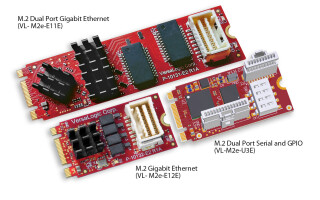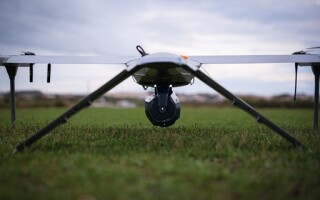Moving virtual systems into the field
StoryJuly 20, 2016
Implementing servers for harsh field-environment applications can be a complex task. Whether the location is a Navy ship, a desert tent, or a shelter in the Arctic, users need a ruggedized server that can function in a harsh environment. Users can achieve reliable system implementation by both focusing on design issues from the very beginning of the process and working with an established provider of ruggedized servers.
Servers are increasingly moving beyond the traditional data center – many users now require data-center services in the field, which can often mean harsh environments. An example of this necessity is the military requirement to move users to zero or thin clients with access to servers running virtualized applications. Virtualized systems in the data center have become commonplace and are becoming even more popular as users realize that there are cost savings, performance improvements, and maintenance benefits to be had from virtualization software. Data centers are designed to support large installations of servers supporting many applications and are environmentally controlled with state-of-the-art cooling and clean 24/7 power sources.
Driving the military conversion to secure thin- and zero-client computing has been the U.S. Army’s 72-page document, “U.S. Army Thin/Zero Client Computing Reference Architecture, Version 1.0, 14 Mar 2013,” which promotes the conversion away from desktop and laptop computers to centralized servers and thin-/zero-client architectures.
Moving the server out of the data center into the real world – one that is hot, humid, salty, sandy, and full of vibration and shock – is a challenge and requires a system designed for the environment. Organizations will be required to look beyond the standard commercial data-center server in a 1-4 U sheet-metal enclosure – they need a better-designed system.
Virtualization in the field
The military is actively switching to zero and thin clients in the field connected to servers running virtualization suites such as VMware. Along with virtual servers used to support multiple applications, there is also a need for servers to support network function virtualization (NFV) in the field. NFV enables a smaller amount of hardware by eliminating specialized routers and switches by moving the software into a server. Software can then provide specialized network functions like routing and security and can also be easily upgraded in the future.
Developing requirements for a ruggedized server can be a confusing task for those used to specifying standard computer equipment for a data center. The server must be able to survive the field environment as well as withstand the trip to the field, as the trip to the remote location can be as hazardous as operating in the actual location.
The key features to look for when defining a system are the overall design and packaging, shock and vibration specifications, cooling, and overall performance. Since the system is designed to be a server, the same electronics components used in high-end data center servers are required, with the only difference that they are more robustly packaged. A typical 1-4 U server designed for rugged military use would support multiple Xeon processors, 32 to 256 Gbytes or more of memory, rotating or solid-state disks in a RAID configuration, and multiple network connections. The key for a well-designed system: How to protect these components in severe environment.
System specifications for harsh environments
A multitude of specifications can be used to specify system design and testing, but the most commonly used is MIL-STD-810G. Although this standard was developed with military applications in mind, it provides a good baseline for specifications needed for any extended environmental environment. MIL-STD-810G addresses a broad range of environmental conditions that include low pressure for altitude testing, exposure to high and low temperatures plus temperature shock (both operating and in storage), rain (including windblown and freezing rain), humidity, fungus, salt fog for corrosion testing, sand and dust exposure, explosive atmosphere, acceleration, shock and transport shock, and vibration. The standard describes environmental-management and engineering processes that can be of enormous value to generate confidence in the environmental worthiness and overall durability of a system design.
For applications that require electromagnetic interference (EMI) protection, MIL-STD-461F describes how to test equipment for electromagnetic compatibility. While MIL-STD-461F compliance is technically not required outside the U.S. military, many civilian organizations also use this document. Even if the potential application does not require MIL-STD-461F, if a device complies with, or is very close to complying to, MIL-STD-461F, then it is certain to comply with the FCC Part 15 and EMC standards of other countries. It is simpler to run one test than to run a separate test for each EMI-compliance requirement.
Features of a rugged server
When considering a new server for a ruggedized application, whether for a military or industrial environment, there are several items to look for: In the basic metalwork, the chassis construction should be good quality. Use of high-quality 5052-H32 aircraft-grade aluminum for its strength and lower weight is a good choice. In addition, a solid front-panel design milled from a solid block for strength is another example of a good design practice. Another aspect: The front panel and any access panel on the system should be sealed with an EMI/environmental gasket. Finally, all hardware should be high-quality stainless steel that is self-locking to provide the best shock, vibration, and corrosion resistance. (Figure 1.)
Figure 1: Major system and test requirements for a ruggedized server.
(Click graphic to zoom by 1.9x)
Also of concern is air flow and cooling. Since the system will probably not be in a well-controlled environment, the ability to cool and provide clean air at the proper air flow rate is required. The system should have long-life, high-reliability, high-velocity fans with an intelligent fan controller designed to determine air flow requirements based on load and external temperature. Just as important as the fan is the need for clean inlet air since there will be dirt and dust in the environment. The use of air filters on all air inlets is required with an EMI filter to eliminate any electromagnetic interference, in compliance with MIL-STD-461F.
In addition to the packaging and cooling design issues, another key factor is the power-supply design. In some instances there is normal input power available to power the server, but in many cases generator power is the only power available. A rugged server design will have redundant power supplies with a wide range of input power requirements. Normally the range will be 100 to 240 volts AC/50 to 60 Hz with auto switching, but most designs will allow for special input voltages, such as 28 VDC, and additional frequencies as required. The input of the power supply will be robust enough to handle line transients and short power drops.
Shown in Figure 2: To illustrate server effectiveness for military applications, a standard Chassis Plans 4U ruggedized server was placed on a barge for the Navy MIL-S-901D barge test. The test consisted of placing 60 pounds of explosives 20 feet from the barge at a depth of 24 feet. Four explosions were detonated at various distances from the barge. The server was operational during all four tests and no repairs or modifications were required.
Figure 2: Navy barge test of 4U rugged server. Effect of 60 pounds of explosives 20 feet from barge and 24 feet deep in the water. (Photo courtesy Chassis Plans.)
(Click graphic to zoom by 1.9x)
Once the system design specification is complete, consideration has to be given to ease of setup and shipping. In most field applications, the system must be set up and operational quickly using simple tools and without expensive assembly. This demands design features such as captive screws for all accessible panels as well as all electronics installed at the factory.
In order to ensure that the equipment survives shipping, the system design must provide support for the electronics as well as the subsystems. Typically, disk drives will be shock-mounted and, if possible, the system itself will be shock-mounted in the shipping container or transit case. The example shown in Figure 3 shows a system installed in a transit case designed for shipping electronics equipment. An additional advantage of this type of container is that it allows the equipment to be operated while in the transit case and the containers can be stacked for larger installations. By using aircraft-grade aluminum for the design, the weight is minimized; a fully loaded transit case can be handled by just two people.
Figure 3: Pictured is a shock-mounted 6U transit case from Chassis Plans that supports a 2U military-grade server with two multicore XEON processors, multiple PCIe expansion slots, a RAID storage unit with as much as 48TB of disk storage, a UPS/power conditioner for assured operation in power-poor en-vironments, and a military-grade rackmount key-board/LCD display. (Photo courtesy Chassis Plans).
(Click graphic to zoom by 1.9x)
Although procurement for a standard commercial-grade server is simpler, total cost of ownership for a rugged application will be higher because of reduced reliability. Operating a ruggedized server is the same as a commercial server since the same administration and virtualized application software is used for both.
David Lippincott is founder and chief technology officer at Chassis Plans, which provides custom industrial and military computer designs. Chassis Plans is also providing the rugged computers for the persistent surveillance aerostats for the 2016 Summer Olympics to be held in Rio de Janeiro, Brazil. Mr. Lippincott can be reached at davidl@chassisplans.com.
Chassis Plans www.chassisplans.com









